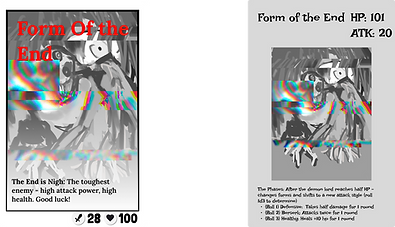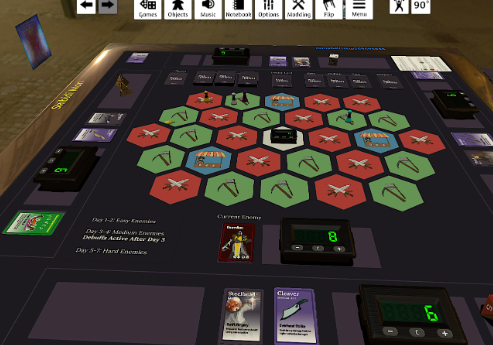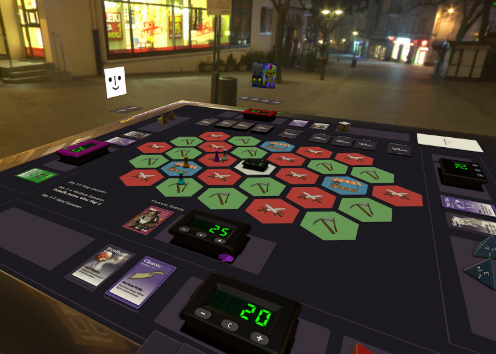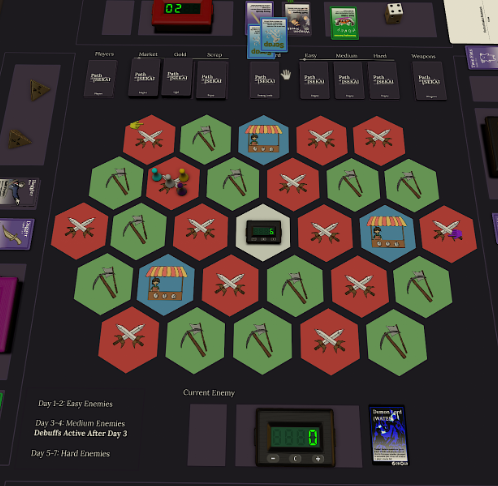
PATH OF ISEKAI
Physical Board Game Design (Digital Version)
Video Walk Through
Overview
Path of Isekai is a PVE game for 4 players, who need to work together to defeat the Demon Lord before the 7-day countdown ends. During the 7 days, they can strengthen their combat power in different ways, such as upgrading weapons.
Board Design

Combat Tile: Allow player fight with different level of enemy based on the count down
Resource Tile: Roll a dice gain the scraps
Market Tile: Allow player purchase action cards
Game Logic
Dice Roll
Dice is the most important tool for players to play. It can determine:
--> Players' attack damage
--> Weapon upgrade success or failure
--> Scraps they can obtain
--> Etc.
Converting
Players are allowed to spend 2 scraps to trade 1 gold
Trading
Players can spend their gold to buy powerful action cards when they land on the market tile.
Game Tasitive Mechanic
Players use scrap to upgrade weapons, and they need to roll a dice to determine its’ success or failure.

For every 1 scrap invested, the number of dice required decreases by 1 (for example, if 2 scraps are invested, 5 or 6 must be rolled, and the success rate is 33.3%).
Game Feedback loop

Design Problem
Balancing Economy
From playtesting results, we found that some Market cards and Enemy cards needed to be reworked. The pricing of certain Market cards, and the effects of others were revised to provide a similar cost/benefit ratio to all others. From playtesting results, there were multiple cards that completely turned the tides in combat, while being easily accessible due to the funds (3 gold) provided at the beginning of the game. This made progression and upgrading too easy and the demon lord battle would be over without much worry. We altered the amount of gold obtained at the beginning (from 3 to 2), but found more issues with that. Beginning with less gold meant that some of the cards that seemed balanced before, now seem to cost an absurd amount that was not worth the cost; these cards have been adjusted as well.

Co-operative Combat Revision

One major revision to the combat system we made improved the player's quality of life for combat hexagons. Now, players can use their turn to join the fight even if they cannot reach the hexagon their teammates are on. The caveat is that the player that cannot reach the hexagon will not take any of the scrap rewards; it will be divided between those standing on the combat tile in which the fight started. This mitigates the need for players to all move to the same tiles throughout the days, which used to be the dominant strategy. Previously, playtesters would stick together and not stray too far from each other because they feared consequences of not being able to fight together and reap great rewards. Joining a teammate’s fight without receiving rewards can also become a strategy to move players closer to Market hexagons if they are a little far.
Enemy Scaling/Balancing
From playtesting results, one group was thrown into combat against a Hard difficulty enemy immediately on the first day. They were lucky and managed to defeat the enemy, but only because they all fought together and got lucky dice rolls. While this could mean players had a chance to reap great rewards off the bat, the chances to win were far too slim, the chances to get a Hard difficulty enemy at the beginning were far too high and the outcome affected the player’s progression too much. To remove this feature, we set rules on what difficulty the enemies would be, determined by the current day on the counter. On days 1-2, the enemies will be on easy difficulty; days 3-4 had medium difficulty enemies and enemies on days 5-7 were solely on hard difficulty.

Playtest



